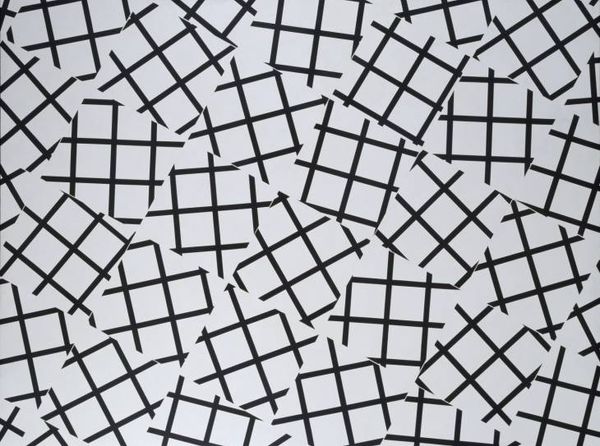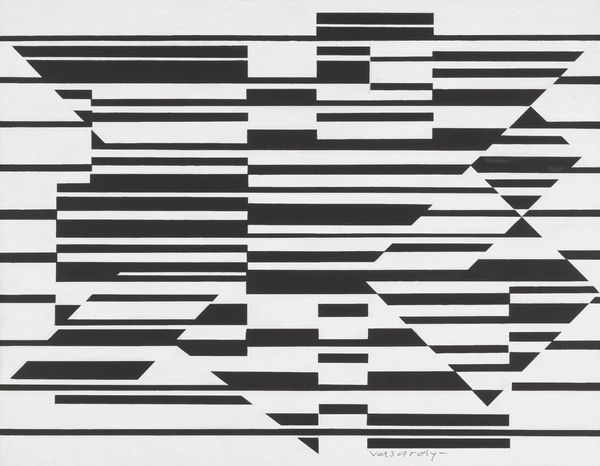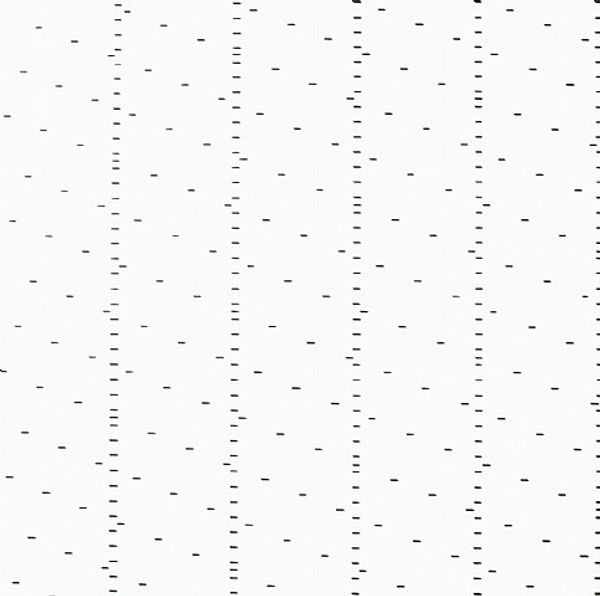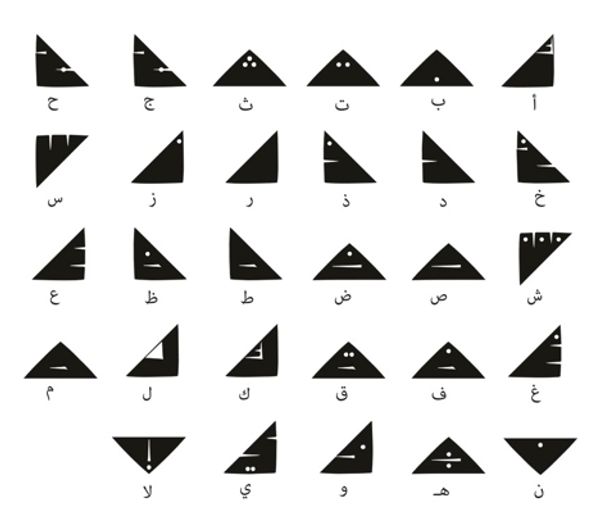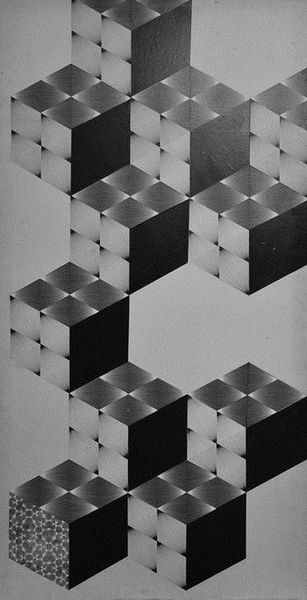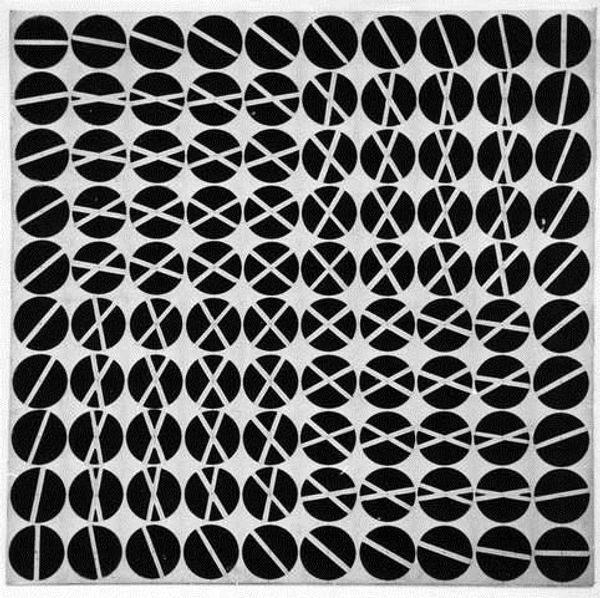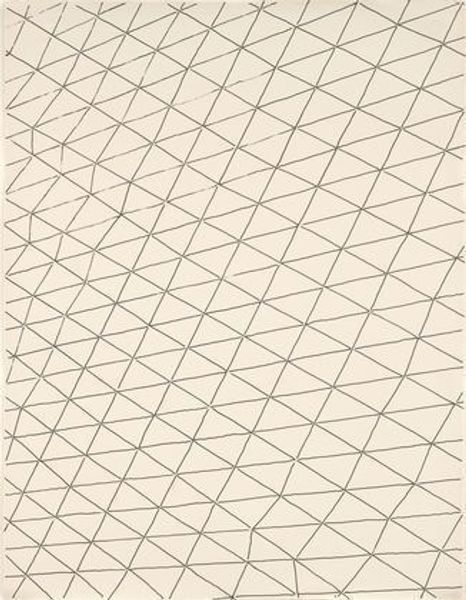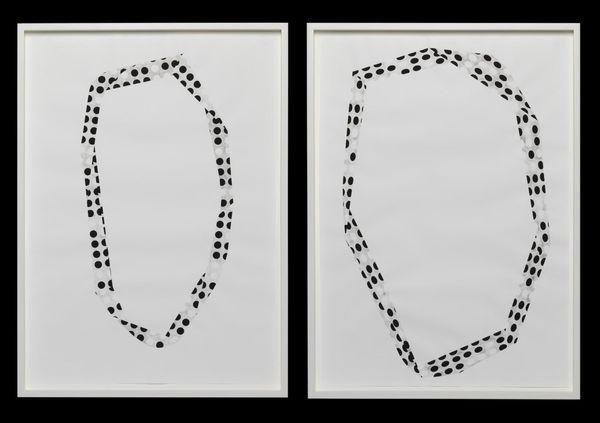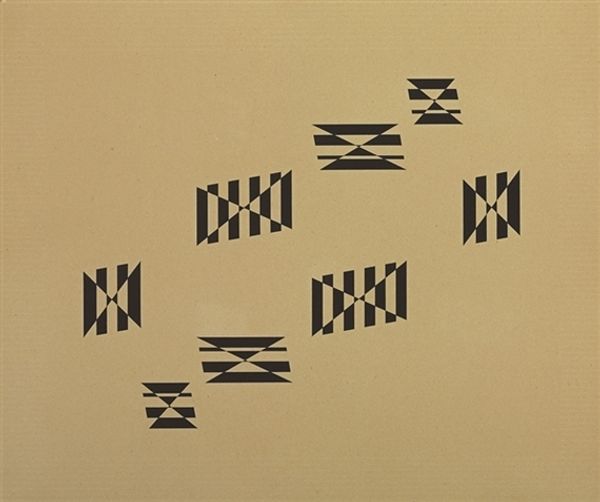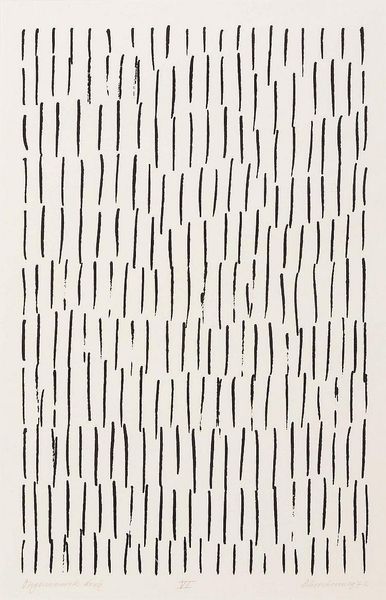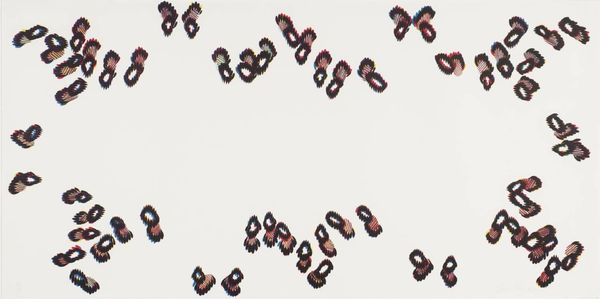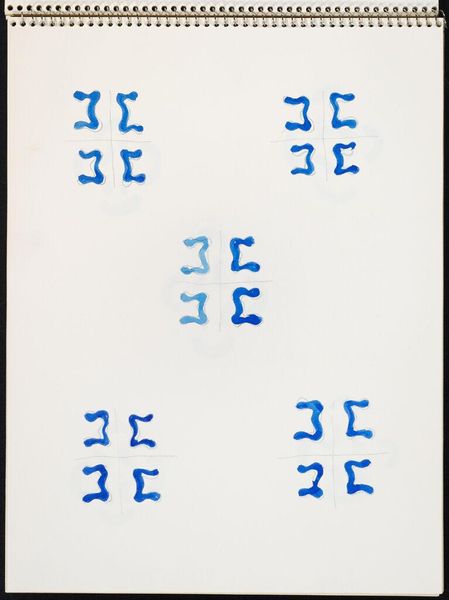
painting
#
contemporary
#
painting
#
minimalism
#
op art
#
geometric pattern
#
geometric
#
geometric-abstraction
#
line
#
digital-art
Copyright: Wade Guyton,Fair Use
Curator: Standing before us is Wade Guyton's "Painting" from 2006. It’s an inkjet print on canvas, and as you can see, the piece consists of a pattern of black X shapes against a white background. Editor: Oh, immediately it strikes me as slightly…unsettling. Like a glitch in the matrix, or maybe the aftermath of a failed printing experiment. There’s something both rigid and fragile about those stark black crosses scattered against that white void. Curator: That’s a really interesting reading. The apparent simplicity is deceptive, isn’t it? Guyton often explores the intersection of digital technology and traditional art forms. These aren’t perfectly rendered Xs; you can see the imperfections from the printing process, little blurs and inconsistencies. Editor: Absolutely, it has a handmade quality despite the seemingly mechanical repetition. And there's a subtle dynamism to the composition. The distribution of the 'X' motifs isn’t uniform, is it? Almost as if they are disintegrating. Curator: Precisely. And it's not just a superficial pattern, is it? There’s this conversation Guyton initiates between the unique artwork and the implications of reproducibility, or the aesthetics of production, and also, the context where they exist. These works often evoke early computer graphics and that clunky aesthetic that defined them, right? It pushes that tension and harmony together. Editor: You're right. And that dialogue, I think, points to a wider social critique about how digital platforms and printing technology both enable mass art production and complicate ideas of individual creative control. We think art has to be perfectly rendered and he shows us where its beauty really lies. The art historical wink that, although technology seems clean, sleek, efficient and without 'fault,' we introduce errors ourselves. It makes you think of glitches or even damaged goods. It is really amazing. Curator: It really does leave one pondering the nature of perfection and imperfection, especially in our technologically saturated world. Editor: So true! Now I see so many interpretations available, and my discomfort has evolved to a certain appreciation of what perfection really looks like. Thank you!
Comments
No comments
Be the first to comment and join the conversation on the ultimate creative platform.
